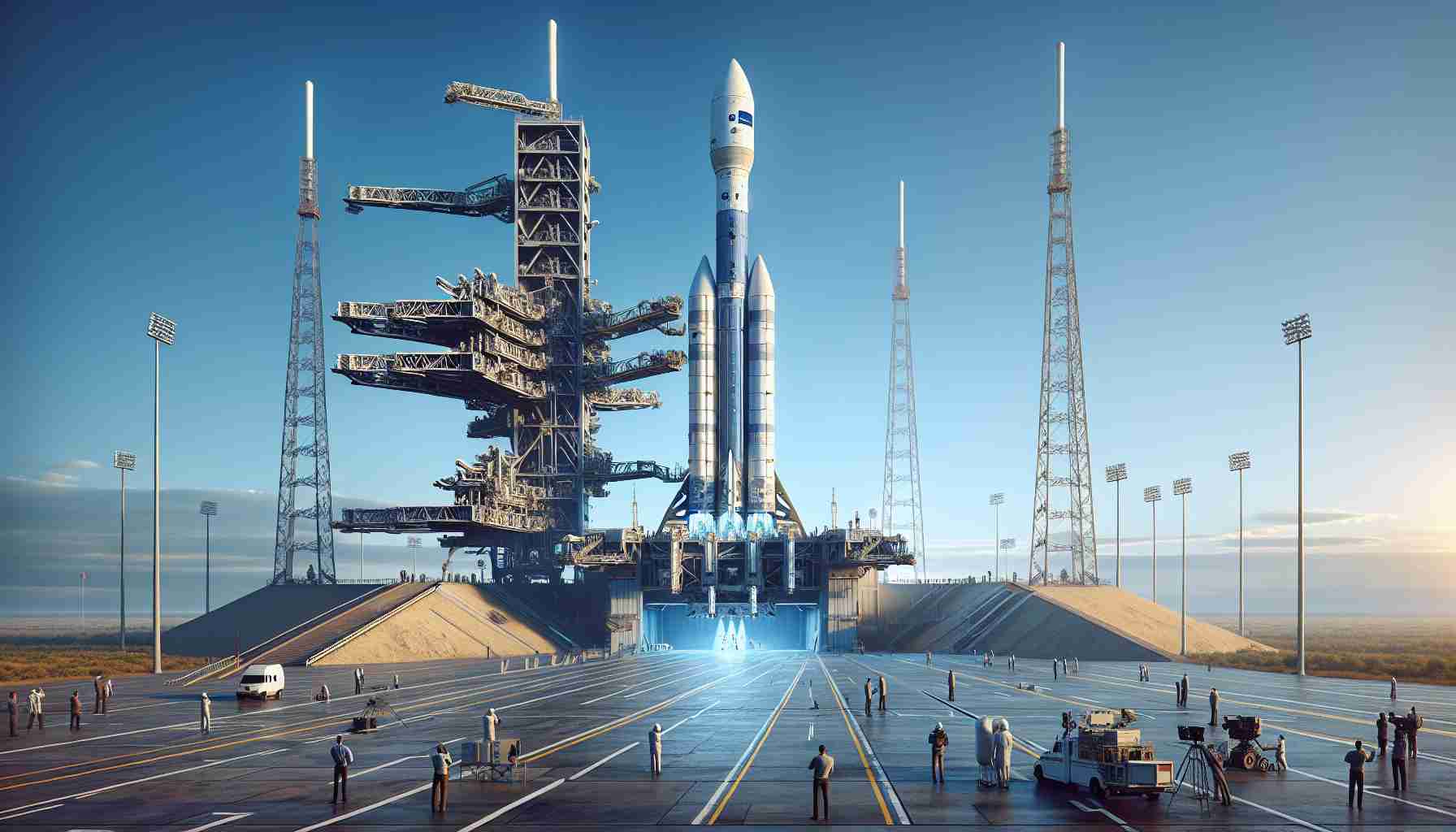
CAPE CANAVERAL, Florida – SpaceX is preparing for a significant mission as it plans to launch a Falcon 9 rocket fitted with 23 Starlink satellites into low-Earth orbit on Wednesday. The launch is slated to take place at 5:47 p.m. ET from the Space Launch Complex 40 at Cape Canaveral Space Force Station. Should any issues arise, there are alternative launch windows extending until 9:23 p.m. ET.
This mission is noteworthy, as it marks the 18th operational flight of the Falcon 9’s first-stage booster. This particular booster has been instrumental in various missions, having previously participated in launches such as Ispace M1, CRS-27, SES 22, Amazonas-6, Bandwagon-1, along with supporting 12 separate Starlink missions.
After the first stage of the rocket completes its ascent and separates, it is anticipated to land on the drone ship named “A Shortfall of Gravitas,” which will be waiting in the Atlantic Ocean. This routine procedure emphasizes SpaceX’s commitment to reusability in space technology, providing efficiency and sustainability in their operations.
This upcoming launch underscores SpaceX’s ongoing efforts to expand its constellation of satellites, which aim to enhance global internet coverage through its Starlink project. As excitement builds, space enthusiasts eagerly await this latest advancement in space exploration.
CAPE CANAVERAL, Florida – SpaceX is gearing up for another ambitious mission, set to launch a Falcon 9 rocket equipped with 23 Starlink satellites into low-Earth orbit. The launch is scheduled for Wednesday at 5:47 p.m. ET from the Space Launch Complex 40 at Cape Canaveral Space Force Station, with additional launch windows available until 9:23 p.m. ET to accommodate any unforeseen scheduling changes.
Highlighting Technological Advancements, this mission will mark a significant step in SpaceX’s trajectory towards deploying an extensive satellite network capable of delivering high-speed internet to underserved and remote areas globally. The latest batch of Starlink satellites includes advancements in communication technology and operational efficiency, paving the way for increased bandwidth and reduced latency.
Key Questions:
1. What is the significance of this launch?
– This mission is part of SpaceX’s ongoing effort to build a robust global internet service via its Starlink constellation, aiming to provide coverage to millions of users worldwide.
2. What are the environmental impacts of deploying large satellite constellations?
– Concerns include light pollution, interference with astronomical observations, and the potential for space debris. SpaceX has indicated plans to mitigate these issues, such as making satellites less reflective and advocating for responsible space traffic management.
Challenges and Controversies:
– Regulatory Hurdles: SpaceX faces scrutiny from regulatory bodies concerning the growing number of satellites in orbit, as well as compliance with international space treaties.
– Impact on Astronomy: Astronomers have voiced concerns over the visibility of Starlink satellites when they are in operation. SpaceX has engaged in discussions with the astronomical community to minimize disruptions.
Advantages of Starlink:
– Global Coverage: Starlink aims to provide internet accessibility to regions where traditional internet infrastructure is lacking or non-existent.
– High-Speed Internet: The service is designed to offer high-speed broadband, which can significantly enhance the internet experience for users in diverse scenarios, from rural homes to disaster-stricken areas.
Disadvantages of Starlink:
– Cost: The initial setup cost, including purchasing the satellite dish and subscription fees, may be prohibitive for some potential users.
– Space Debris Concerns: With thousands of satellites planned, the risk of collisions and the creation of space debris raises concerns about long-term sustainability in low-Earth orbit.
As anticipation mounts for this upcoming Starlink launch, it represents not only a stride in technology but also a focal point for debates on the future of space exploration and internet accessibility.
For more information about SpaceX and its various missions, you can visit SpaceX.



